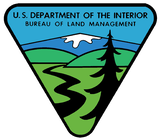What?
The California Bumble Bee Atlas is a collaborative project to track and conserve the bumble bees of California. The project joins similar inventory efforts in Oregon, Washington, and Idaho, collectively, the Western States Bumble Bee Atlas. Our goal is to gain a better understanding of the distribution of bumble bees throughout the region. This will help us to more effectively enact conservation measures that will benefit these important native pollinators. We've divided the area up into priority grid cells to ensure a broad distribution of sampling in all of the unique habitats of the region. Your participation in this project will help the researchers gain a better understanding of where bumble bees are thriving in California, and glean information about what habitat features are contributing to productive bumble bee communities. Ultimately, we will better understand how to manage lands throughout the region that will help to support a more healthy ecosystem.
Why?
Bumble bees are essential pollinators in our natural landscapes, as well as in gardens and on farms. California is home to at least 25 species of bumble bees, and several of them face an uncertain future. The western bumble bee has declined dramatically, with greatest losses observed in California and adjacent areas of the Pacific Coast. Other California species, including Crotch's bumble bee (B. crotchii) and Morrison’s bee (B. morrisoni), are also in decline. Conservation partners in California and the Pacific Northwest have joined forces to support bumble bee conservation through a region-wide project to collect information on bumble bee species distribution. The missing partner is you - become a community scientist and join us!
How?
We aim to make this as fun and as inclusive as possible. As such, we've created opportunities so that you can get involved at many different levels. The first thing you will need to participate is a Bumble Bee Watch account. It’s easy to set up online and takes about 5 minutes.
Once you've done that, here are the different levels at which you can get involved:
There are three ways to collect data for the California Bumble Bee Atlas.
Once you've done that, here are the different levels at which you can get involved:
There are three ways to collect data for the California Bumble Bee Atlas.
- Incidental observations: At a very basic level you can submit any photo-based observations of bumble bees to BumbleBeeWatch.org. You can take pictures of bumble bees in your backyard, where you work, or on your travels around the region. Observations made in California will become a part of this project, but you can also use Bumble Bee Watch to submit observations from anywhere else in North America.
- Point Surveys: If you are interested in getting more involved, you can officially adopt a grid cell and participate in our more formal surveys. The first type of formal survey is a point survey, in which you'll travel to a specific locality within your adopted grid cell to conduct a standardized 45-minute collection of bumble bees.
- Roadside Surveys: similar to point surveys, for this option, you'll adopt a grid cell, then use our roadside survey protocols to make a series of 15-minute bumble bee collections along a driven route.
- Adopt a grid cell.
- Attend a training event, then take a short quiz to get your name added to our Scientific Collection Permit. This quiz will demonstrate that you understand our standardized protocol and how to protect bees and other sensitive natural resources from harm.
- Familiarize yourself with project protocols and procedures. And, you'll need to attend one of our online or in-person training events.
- Visit a location within your grid cell two times (at a minimum – more sampling is very welcome if you are willing) during the bumble bee season and use our standardized protocol to sample for bumble bees as well as the surrounding habitat. To meet this requirement you can visit two different locations within the grid on the same day, or revisit the same location on two different days.
- Agree to submit your data online using BumbleBeeWatch.org.
- If all of this sounds great and you're ready to go bee catching, register for the project, or contact us!



